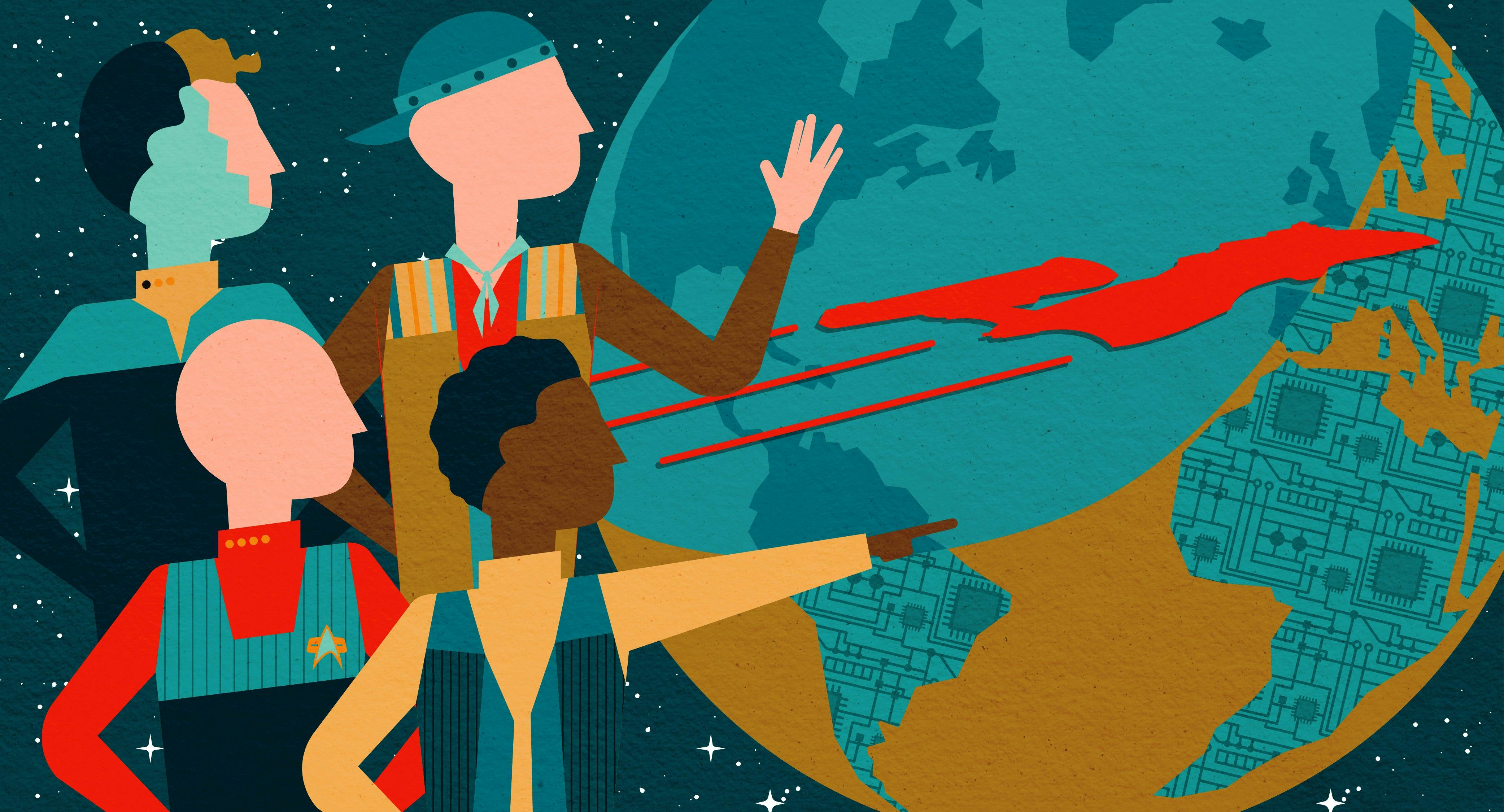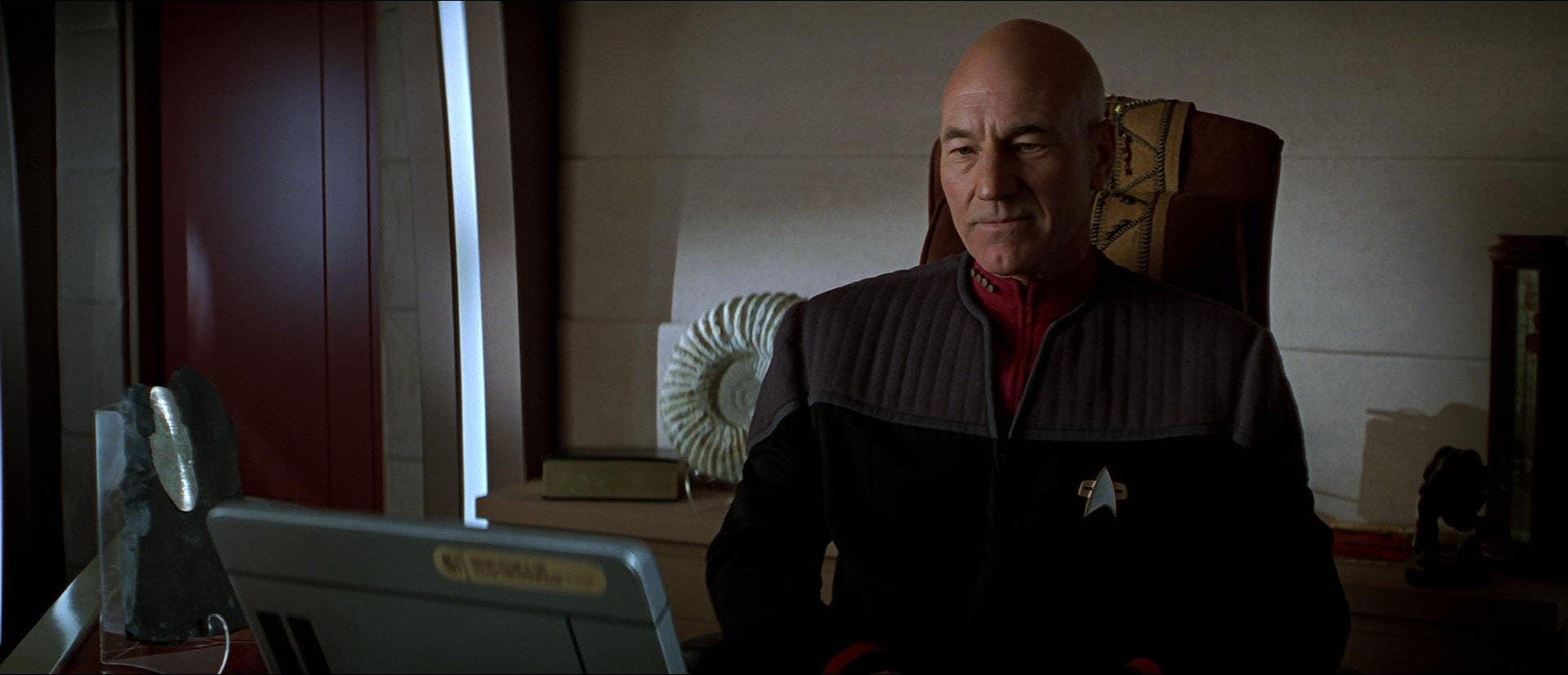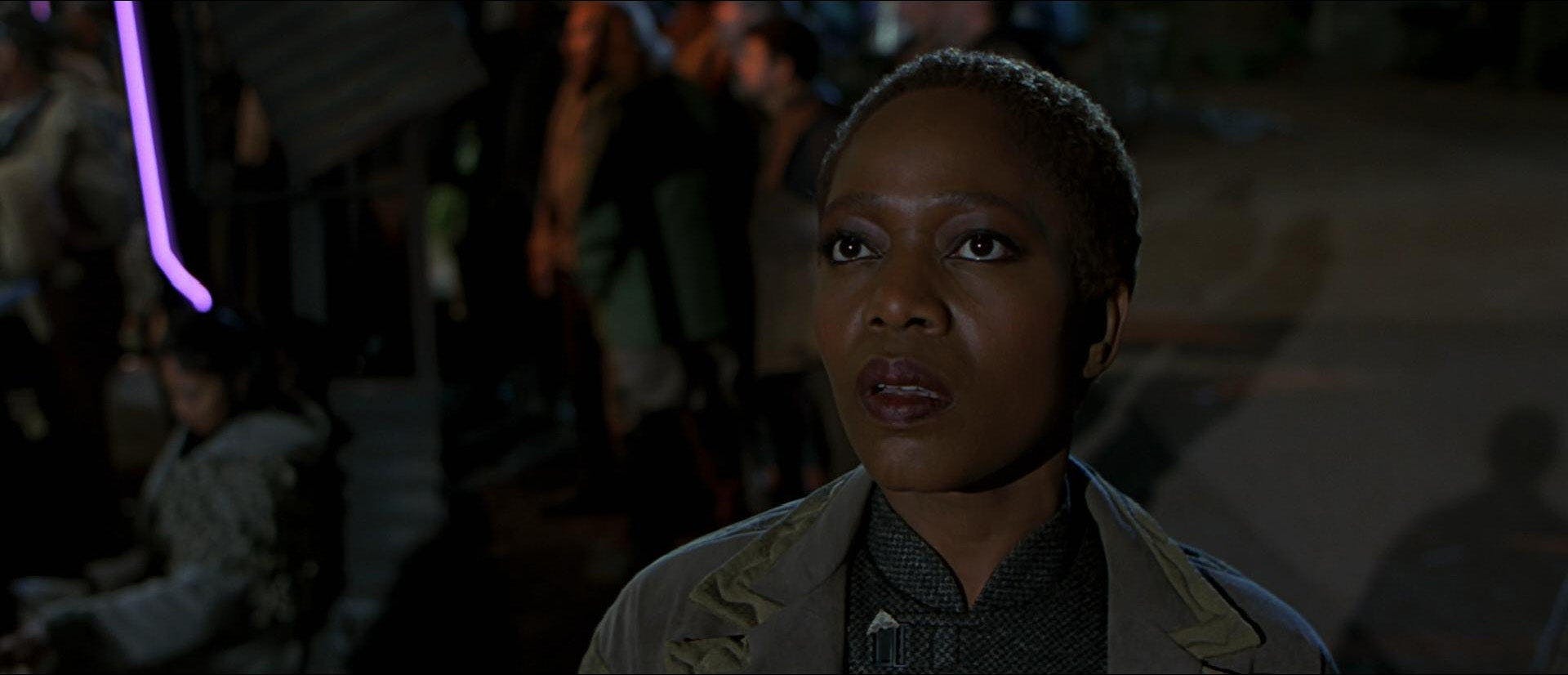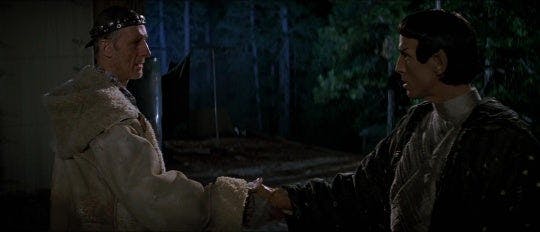Published Apr 5, 2022
Watching First Contact In the Worst Possible Timeline
It’s become easier to understand the movie’s fear of losing the future.

StarTrek.com | Getty Images
This article was originally published on November 20, 2020.
Star Trek, at its core, is about a future where we’ve overcome culture clash to become a better society who can work together to a common good. Creator Gene Roddenberry spoke at length about why his Enterprise crew comprised people from different races and backgrounds, and how it represented a future beyond the time that gave birth to the series. Trek is matter-of-fact, even innocent, about a humanity without borders.
It’s for that reason that, in a series that features the meeting of disparate cultures as a constant theme and plot complication, the biggest culture clashes often happen between our Federation heroes and the humans of the past. In the first season episode of TNG, “The Neutral Zone,” when the Enterprise rescues three cryogenically frozen humans from the late 20th century, they are like boorish tourists, both overwhelmed by the miracle of the future and uncertain what to do with themselves in a world where wages and want don’t exist. In the DS9 episodes “Past Tense, Parts 1 & 2” Sisko, Bashir, and Dax find themselves dragged back to a 2024 ripe for violent revolution as society buckles under the weight of its every ill.
The past (that is, our present), is terrible and full of trouble, but every human in Star Trek walks around free from that burden. We are going to get over it, Trek reassures us. There’s hope. We can be better.
That future is what’s at stake in Star Trek: First Contact, the second TNG-cast film and Jonathan Frakes’ feature length debut as director. As the Borg pull a desperate gambit to travel back in time to Earth before its ascension into the Federation, they aren’t just trying to assimilate Picard again, but to completely erase the world that created him. In almost no other story in all of Star Trek is the fear of losing that future so immediate.
Watching it now, as the world groans under the weight of so much woe, is to view the film in a completely different light. It feels like we, too, are struggling against the promise of the future being callously snatched away.
Lily: How much did this thing cost?
Picard: The economics of the future are somewhat different.
Coming as it did after Star Trek Generations, Star Trek: First Contact was also somewhat freer from its own past, but fighting for its future in a way. It was the first of the feature films without any of The Original Series cast, and so had to answer the question of whether or not the TNG cast could keep the franchise going on the silver screen two years after the end of its run on television. Whether fairly or not, it seemed like the movie had something to prove. (It did: First Contact is a damn good movie that expands on the juiciest series lore while remaining accessible to newcomers and packed with darling character moments and thrilling action.)

StarTrek.com
In a recent interview, Frakes called the Borg “our best, most complicated, and interesting nemesis.” Where the Federation celebrates individuality, the Borg strip it away. Where Picard and the crew of the Enterprise seek to reason with other peoples and employ diplomacy, the Borg demand submission and swallow up other cultures. Their hive mind is as impenetrable to reason as their shields are to phasers.
It’s crucial that the movie understands why they are so scary. The first shot, zooming out from Picard’s pupil as he stands enthralled within a vast Borg cube, says everything about the captain’s antagonist. Years after his encounters with them, he lives in mortal fear of an enemy that will strip away his sense of self and turn him into a cog in a violent, callous machine.
A movie about a wounded Picard warping to Earth’s defense against “bionic zombies” would’ve been a serviceable TNG movie, if perhaps one that could’ve just been an overlong episode of the show. And this is why the moment their devious, time-traveling backup plan is revealed is such a brilliant end-of-an-act twist.
Picard: The date… Data I need to know the exact date.
Data: April 4th… 2063.
It is not just the Enterprise and her crew hanging in the balance but the world that made these people we’ve grown to love across seven seasons of television. By putting it all on the line, First Contact becomes one of the most effective thesis statements on what Star Trek’s vision for the future of humanity means.
Of course, that premise would just look like some very privileged people freaking out amongst themselves without the perspective of Zefram Cochrane and Lily. As the film switches between the mission down on the surface to ensure that a reluctant Cochrane goes through with his historic flight and Lily’s perspective of the desperate fight to stop the Borg from taking the Enterprise, it spends equal time reflecting on hope for the future and the fear of losing it.
Riker: It is one of the pivotal moments of human history, Doctor! You get to make first contact with an alien race! And after you do, everything begins to change.
Troi: Poverty, disease, war - they’ll all be gone within the next 50 years.
To believe the fight against the Borg hinges upon simply blowing them up is to misunderstand them, of course. So it’s to the credit of the scriptwriters that the story pushes Picard to ever more callous and obsessive lengths to keep the fight going even as it becomes clear he’s essentially lost the Enterprise. When he guns down two drones on the holodeck and strips the corpses of what he needs, it becomes clear that it isn’t just the Enterprise he’s losing, but the “more evolved sensibility” of the future that he so proudly touts to Lily. The Picard we see barking orders to a terrified crew, clinging to a violent confrontation, and hurting Worf’s feelings is not the man we know.

StarTrek.com
It’s only after Lily gets him to realize he’s losing himself to pettiness and revenge that he forces the Borg to play to his own strengths: The absolutely unbreakable bond he has with his crew. His faith in his shipmates is borne out yet again as Data reveals he’s been playing the Borg Queen for a sucker all along and wrecks her plans at the last possible second. (The creepy seduction between the two is the only part of this movie I don’t really like, but it’s worth Data’s cold-as-ice betrayal.)
Ultimately, Picard and the crew of the Enterprise save the future with all of its best principles. Down on the surface, her brilliant, cooperative, well-educated, unflappable scientists repair the single most important machine in human history like it’s no biggie. On the ship, in a nightmarish fight for their lives, they don’t lose sight of what makes them human, and peacefully choose a life of self-sacrifice stranded in a strange time because it’s the right thing to do even though it sucks.
Lily: I envy you. The world you’re going to.
Picard: I envy you. Taking these first steps into a new frontier.
It’s Cochrane’s story, though, that’s the most relatable. He hasn’t the slightest inkling he’s about to usher in a new age of peace hitherto only dreamed of, and he’s understandably terrified. When the time comes, though, he finds that he’s equal to the task even if he doesn’t know precisely what he’s doing.

StarTrek.com
The world is unbearable right now, and the promise of a future like Star Trek has never felt further out of reach for all the same small-minded reasons Trek has always argued against. Watching First Contact again, though, is to be reminded that even our rosiest imaginings of the future have always told us that it was bound to get worse before it got better. First Contact is the eighth movie in the series, but it might be one of the best arguments for why Star Trek’s is so important, and that we can get there together, with our heads held high.
A Timeline Through the Star Trek Universe
Kenneth Lowe (he/him) works in state government in Springfield, Illinois and also writes for Paste Magazine. You can follow him on Twitter @IllusiveKen.
